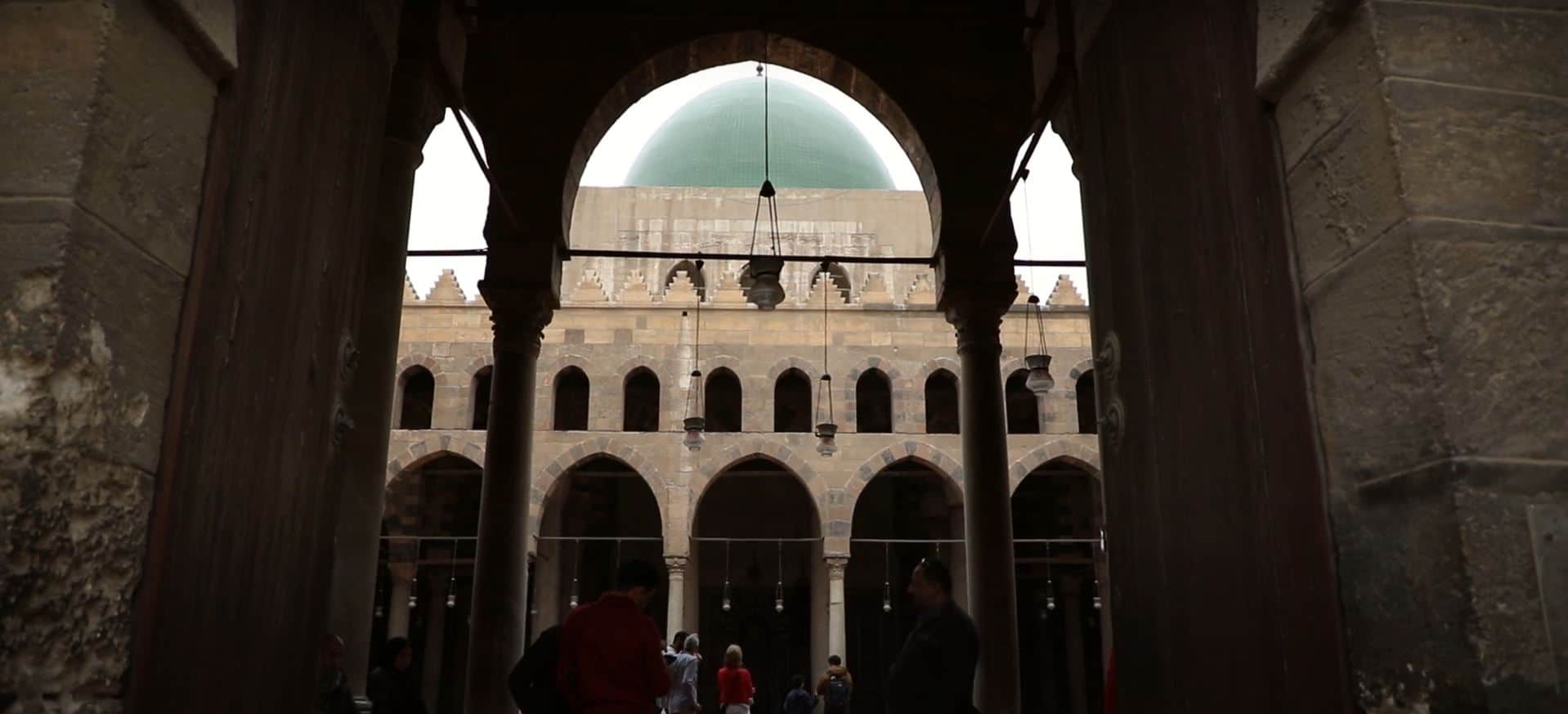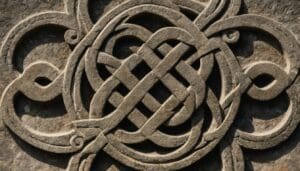Mosques at the Citadel – Cairo – Egypt

Updated On: April 16, 2024 by Maha Yassin
The Citadel of Cairo, perched atop the Mokattam Hills, is an iconic symbol of Egypt’s rich history and architectural heritage. While the Citadel is an awe-inspiring fortress withstood centuries of change and upheaval, it is also home to several magnificent mosques showcasing the country’s Islamic artistry and cultural diversity. In this article, we will explore the history, architecture, and significance of the mosques at the Citadel, shedding light on their enduring beauty and cultural importance.
A Citadel with Many Faces
The Citadel of Cairo, also known as the Saladin Citadel, was constructed in the 12th century by Salah ad-Din al-Ayyubi (Saladin), the founder of the Ayyubid dynasty. It was strategically built to protect Cairo from potential invasions and served as a military stronghold for centuries. Over the years, the Citadel has witnessed numerous rulers, dynasties, and architectural additions.
The mosques within the Citadel bear testament to the diverse historical periods they represent. These sacred sites have been important centres of religious and cultural activities throughout Egypt’s history, reflecting the evolution of Islamic architecture and the region’s cultural exchange with other civilizations.
The Great Mosque of Muhammad Ali: Founder of Modern Egypt
The most iconic mosque within the Citadel is the Great Mosque of Muhammad Ali, also known as the Alabaster Mosque. This stunning structure dominates the skyline of Cairo and is often the first image that comes to mind when one thinks of the Citadel.
Constructed between 1830 and 1848 during the rule of Muhammad Ali Pasha, this mosque is a masterpiece of Ottoman architecture. Its design was inspired by the grandeur of Istanbul’s Blue Mosque, one of Egypt’s most prominent examples of Ottoman-style architecture.
The exterior of the Great Mosque is adorned with gleaming white alabaster, giving it a majestic appearance. Its central dome and four towering minarets are striking features that make it a prominent landmark in Cairo. The interior is equally impressive, with intricate decorative details, including ornate chandeliers, colourful stained glass windows, and a large central dome that spans the main prayer hall. The mosque is designed to accommodate thousands of worshippers and is an active religious site.
The Mosque of Sultan al-Nasir Muhammad
Another significant mosque within the Citadel is the Mosque of Sultan al-Nasir Muhammad, built in the 14th century. This mosque is a prime example of Mamluk architecture, characterized by its intricate geometric patterns, decorative calligraphy, and colourful ceramics.
The mosque’s main entrance is a work of art featuring an intricately decorated facade with beautiful inscriptions and geometric designs. Visitors are greeted with a courtyard surrounded by columns and arches leading to the main prayer hall. The mihrab (prayer niche) is adorned with elegant geometric patterns, and the ceiling is covered in stunning woodwork. The Mosque of Sultan al-Nasir Muhammad is a remarkable representation of the architectural achievements of the Mamluk period in Egypt.
The Mosque of Suleiman Pasha
The Mosque of Suleiman Pasha, also known as the Mosque of Suleiman Agha al-Silahdar, is another notable mosque at the Citadel. It was built in the 16th century during the Ottoman era and stands as a testament to the architectural influence of the Ottomans in Egypt.
The mosque features a central dome and two slender minarets, reflecting Ottoman architectural principles. The interior is adorned with beautiful tiles, intricate calligraphy, and a striking mihrab. The courtyard is surrounded by a colonnade with ornate arches, creating a tranquil space for reflection and prayer. The Mosque of Suleiman Pasha showcases the fusion of prominent Ottoman and Islamic architectural styles during its construction.
Significance of the Mosques at the Citadel
The mosques at the Citadel of Cairo hold immense cultural and historical significance for Egypt. They serve as religious institutions and architectural marvels, representing different eras of Egypt’s history and evolution. Here are some of the key reasons why these mosques are so important:
- Religious Significance: The mosques within the Citadel continue to be active places of worship, where Muslims gather for daily prayers, Friday sermons, and special religious occasions. These sacred spaces play a vital role in the spiritual life of the local community.
- Architectural Heritage: Each mosque within the Citadel showcases distinct architectural styles that have left an indelible mark on Egypt’s architectural heritage. From Mamluk to Ottoman influences, these mosques serve as living history lessons, preserving the country’s diverse architectural traditions.
- Cultural Exchange: The architectural influences in these mosques reflect the cultural exchange between Egypt and various Islamic civilizations over the centuries. They provide evidence of the cross-cultural pollination that has enriched Egypt’s heritage.
- Tourist Attractions: The mosques at the Citadel are major tourist attractions, drawing visitors from around the world to admire their beauty and historical significance. They contribute to the tourism industry in Cairo and promote cultural understanding.
- Educational and Research Value: Scholars, historians, and architects study these mosques to understand Islamic architecture’s evolution and the socio-political dynamics of different periods in Egyptian history.
Exploring the Rich Heritage Around the Mosques at Cairo’s Citadel
Exploring the area around the Mosques at the Citadel of Cairo offers visitors a chance to delve deeper into Egypt’s rich history and culture. Here are some of the notable attractions located nearby:
- Cairo Citadel: While you’re already at the Citadel, make sure to explore the fortress itself. Walk along its historic walls, visit the various museums inside, and take in the breathtaking views of Cairo from its elevated position.
- Mohamed Nagy Museum: Located within the Citadel, this museum is dedicated to the renowned Egyptian artist Mohamed Nagy. It houses a collection of his artwork, providing insight into his life and contributions to Egyptian art.
- The Police Museum: Also situated within the Citadel, this museum offers a unique glimpse into the history of Egyptian law enforcement. Visitors can explore a variety of police-related artefacts and exhibits.
- Manial Palace and Museum: Located just a short drive from the Citadel, the Manial Palace was the former residence of Prince Mohammed Ali Tewfik, the uncle of King Farouk. The palace is a masterpiece of Islamic architecture and features stunning gardens, a mosque, and a museum showcasing the prince’s belongings.
- Al-Azhar Park: A short distance from the Citadel, Al-Azhar Park is a beautifully landscaped green space offering respite from the hustle and bustle of Cairo. The park features gardens, water features, and excellent city views. It’s a perfect spot for a stroll or a picnic.
- Khan el-Khalili Bazaar: Located in the heart of Old Cairo, this bustling market is a treasure trove of traditional crafts, spices, jewellery, textiles, and souvenirs. It’s an excellent place to shop for unique gifts and immerse yourself in the vibrant local culture.
- Historic Cairo: The Citadel is situated in the historic district of Cairo, and nearby, you’ll find a wealth of ancient mosques, madrasas, and other historic sites. Some notable ones include the Sultan Hassan Mosque and the Al-Rifa’i Mosque.
- The Hanging Church (Saint Virgin Mary’s Coptic Orthodox Church): Located in Coptic Cairo, this ancient church is one of Egypt’s oldest and most significant. Its name comes from its location atop the Babylon Fortress’ southern gatehouse.
- The Egyptian Museum: While not close to the Citadel, the Egyptian Museum is a must-visit for anyone interested in Egyptology. It houses an incredible collection of artefacts, including the treasures of Tutankhamun.
- Al-Muizz Street (Al-Muizz li-Din Allah Street): This historic street is often referred to as one of the most extraordinary open-air museums in the world. It’s lined with stunning Islamic architecture, mosques, madrasas, and markets. A stroll along this street is a journey through centuries of Cairo’s history.
- Al-Azhar Mosque: One of the oldest universities in the world, Al-Azhar Mosque is an important religious and educational institution. It’s an architectural masterpiece and a centre of Islamic learning.
- Islamic Art Museum: Located in the Bab al-Khalq area, this museum houses a vast collection of Islamic art and artefacts, including ceramics, textiles, manuscripts, and architectural elements.
Visiting these attractions near the Mosques at the Citadel of Cairo provides a well-rounded experience of Egypt’s history, culture, and architectural heritage. From ancient churches to bustling bazaars, there’s something for every traveller to enjoy in this historically rich part of the city.
Conclusion
The mosques at the Citadel of Cairo are not merely places of worship; they are living monuments that encapsulate Egypt’s rich history, cultural diversity, and architectural brilliance. From the majestic Great Mosque of Muhammad Ali to the intricate designs of the Mosque of Sultan al-Nasir Muhammad and the fusion of Ottoman and Islamic styles in the Mosque of Suleiman Pasha, these mosques tell the story of Egypt’s evolution over the centuries.
Visitors to the Citadel are greeted by a stunning panoramic view of Cairo and the enduring beauty and cultural significance of these mosques. They stand as testaments to the resilience and artistic achievements of Egypt’s people and serve as a reminder of the country’s deep-rooted heritage. The mosques at the Citadel are a treasure trove of history and architecture, inviting all to explore and appreciate their splendour.






